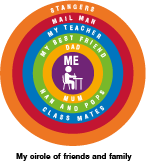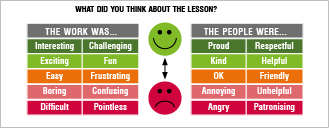“I was asked to spend some time with Edwyn, a year 4 pupil, who was being assessed for ADHD”, an Educational Psychologist colleague told me. “I had observed him in class and he had been disruptive, so I sat down and asked if he knew why I was meeting him. He replied that he was naughty. When I asked him to explain what that meant, he said that ‘things turned bad’ after his previous teaching assistant left because she was ‘the only one who liked to spend time with me’. We chatted some more and he told me that his grandfather had also died over the summer holidays.”
In talking to Edwyn about his life, my colleague had discovered that he had experienced two huge losses within two months. Edwyn’s difficulties engaging within the classroom were because he was struggling to manage emotions associated with loss rather than challenges related to ADHD.
The 2014 Special Educational Needs and Disability (SEND) reforms issued a statutory duty for teaching teams to spend more time understanding the lives of the children that they support and to ensure they fully appreciate:
- Children’s wishes, feelings, views and aspirations
- The life goals children feel are important to them
- The type of support they need to achieve these
“No decision about me, without me”
Involving Edwyn in discussions about his life had given his team essential information which enabled adults to provide the most appropriate support for him. Instead of initiating referrals to explore the use of medication, Edwyn’s team were instead able to reassure him that there were supportive adults in his life in the absence of his grandfather and his previous teaching assistant. Edwyn used visual friendship circles to facilitate the sharing of his views, but for the 10% of children with Speech, Language and Communication Needs (SLCN) in schools, it can be much more of a challenge in enabling them to contribute to important decisions that impact on their lives.

If your New Year’s resolution was to increase children’s participation in your classroom then The Communication Trust’s Participation Toolkit is a good place to start. (http://tinyurl.com/involvecyp). There are resources and strategies for children at 3 different stages of language and communication development so that no child should be excluded from shaping their lives because of communication challenges:
Stage 1: Pre-Intentional Communicators
There is a growing body of research which shows that these children clearly respond to and influence those around them. Teams can increase the frequency that children participate by ensuring there are ongoing, real time opportunities for children to respond to, shape and interact with their worlds whilst making sure any communicative behaviours are acknowledged and acted upon by the adults supporting them. These interactions can be documented and used as an individualised, child-centred evidence base which informs the planning of future learning experiences for children. The SCERTS framework (www.scerts.com) has been shown to do this effectively.
Stage 2: Children With Minimal Language
Children with emerging language benefit from opportunities to broaden the range of ways they contribute to shaping their lives, allowing them to learn new vocabulary and practise creative sentence types. Helping children to use adjectives and verbs to describe their day through symbols boards, such as Talking Mats (www.talkingmats.com), will support both language development and participation.
Stage 3: Children With Lots Of Spoken Language
Although these children are often very chatty, there may be difficulties in using spoken language for recall, reflection, reasoning and planning… all critical skills if children are going to develop autonomy and self efficacy. It is therefore still important to maintain the use of visual supports which help them to gain more insight into, and share information about, their lives. Visual journals like the ‘What was my lesson like?’ tool can help build a picture of a child’s week and clarify where their challenges and strengths might lie.
Finally…
The United Nations Convention on the Rights of the Child (1989) states that all children have the right to shape the decisions that influence their lives, yet this is one of the provisions most widely disregarded in almost every sphere of children’s lives. There are very real challenges for children with SLCN to play meaningful and active roles in their lives so adults must work hard to create opportunities, empower children and implement their views and ideas. In doing this children will develop the language and communication skills to become confident influencers of their lives.
Some names and identifying features have been changed to protect the privacy of individuals.

5 Top Tips to increase children’s participation
- Ensure children have many ‘real time’ opportunities to shape learning throughout the day.
- Symbols can help children understand and use new vocabulary they might not yet be confident in using.
- Recognise each child’s strengths and interests and ensure that these form the foundations of any goals that are set.
- Make sure children see that their ideas and views are acted upon… “What you said… what we did…” displays are great ways of giving feedback to children.
- Make it social! Using The Communication Trust’s whole school planning tools will mean that pupil participation becomes a whole school event.
Language Link’s teacher engagement ratings, pupil views and parent views inform its measured outcomes. See for yourself with a week’s free trial.
Please login to view this content
Login